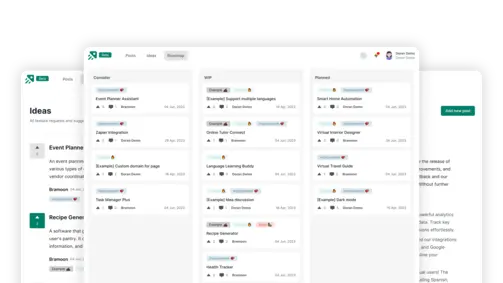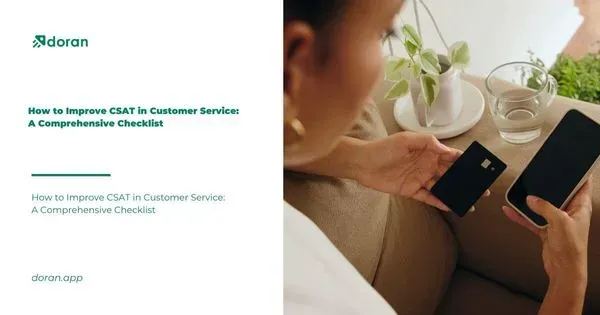Mastering Connection: Crafting an Effective Customer Engagement Strategy
Create changelog and product roadmap for your product
Explore nowTable of contents 9 min
In the dynamic landscape of business, crafting a robust customer engagement strategy is not just a necessity but a competitive advantage. This guide delves into the intricacies of building an effective customer engagement strategy, exploring the principles and methodologies that empower businesses to connect, resonate, and build lasting relationships with their customers in today’s fast-paced digital era.
What Customer Engagement Strategy?

A customer engagement strategy streamlines interactions and activities to produce the best possible customer experience, both before and after the purchase. Various communication methods are used to create a relationship, boost satisfaction, and proactively nurture your client base. An effective strategy is measurable and sensitive to client needs, allowing you to collect feedback, input, and relevant consumer performance data to adjust your strategy as needed.
The Advantages of Developing a Customer Engagement Strategy

A customer-centric approach gives your organization a competitive advantage in a world where customers have a plethora of product options. However, implementing a comprehensive customer engagement strategy not only enhances customer relations but also benefits organizations wanting to increase conversions. Companies that have an active consumer base may notice the following improvements:
Increase the Overall Quality of the Customer Experience
Customers are more inclined to purchase when they have a positive experience, although this does not necessarily happen right away. Customers may need to interact with your brand several times before placing an order. Customers, on the other hand, are easily turned off by a single unpleasant experience.
It’s important to note that while the terms “customer experience” and “customer engagement” are sometimes used interchangeably, each plays a specific role in the customer nurturing process. Your customer experience is how your brand is perceived by consumers, or how your brand is viewed and received from their point of view. Customer engagement refers to how a customer engages with an experience and a brand, including their decisions as well as how they communicate and respond to your products and services.
Improve the Level of Excellence of your Customer Relationships
Nobody enjoys an aggressive, deceptive sales presentation. Empty promises fall on deaf ears, and clients who do buy from you are unlikely to do so again anytime soon. They have no relationship to your firm, making you one of several possibilities rather than their first pick.
Customers’ purchase behavior changes dramatically when they know and trust your brand to give value. Customers are 23% more inclined to spend money with businesses they trust, regardless of new trends, promotional offers, or competition promises. Relationships are at the heart of business, and they live on give and take. Consumer engagement allows you to change your attention away from what you gain from the consumer and towards what you give to them.
Increase the Probability of Referrals
When customers have a positive or negative experience, they want to share it with others, whether it’s through an Amazon product review or with their peers. When you exceed a customer’s expectations, they want others to know about it. They make unprompted references to their friends, family, and coworkers. Furthermore, even if they start a new job, a decision-maker who loves your brand is more likely to be a lifelong customer.
People can publicly chronicle their experience with your organization in the age of social media, particularly on sites like Yelp, Google, Facebook, and LinkedIn. Positive feedback, like in-person interactions, goes a long way, with 86% of customers saying they review a business online before making a purchase. On a similar vein, unfavorable reviews can be devastating to your organization, and bad news spreads quickly, threatening to cause irreversible harm to your reputation.
Maintain a Customer-First Mentality
Customer engagement requires you to put on your consumer hat and approach sales and marketing from the eyes of the purchasers. The only way to ensure that clients are happy with their experience is to provide them what they desire. From data collecting (via your CRM, sales engagement platform, or sales automation tools) to consumer feedback and forums, developing an engagement plan requires as much social listening and research as brand marketing. Some would go even further. The more you know about your customer, the more effectively you can target your message and experience.
Encourage Long-Term Growth
Customer connections based on discounts and repeated sales pitches do not last long since they are unmemorable. Quality and personalized services will be difficult for your consumers to forget, and they will return for the experience. When you’re continually looking for new cash sources, it’s difficult to scale your firm. You may build your company’s success on a devoted client base that is willing to grow with your firm by spending both money and resources in improving customer experience and engagement.
Increase the Value of Your Brand
A successful customer engagement strategy focuses on value rather than just the bottom line. Your company is more than just a supplier of goods or services; you are a solution to your customers’ problems and a useful resource. Traditional marketing strategies prioritize the transaction, however customer engagement is about offering considerable value to the customer so that they desire to buy your product or service. It empowers the consumer and provides them a sense of purpose in the process, transforming them into active decision-makers rather than passive recipients of the experience.
Increase Revenue
Customers who are engaged are the lifeblood of your company. They are more inclined to purchase than a disengaged audience since they are loyal to your brand. Upselling to customers who already believe in your goods is also easy. The nature of business is to attract and convert new leads, yet retargeting current customers needs fewer resources and has a shorter conversion time. Improved customer interaction may result in a 22% increase in cross-sell revenue, a 38% increase in upsell revenue, and a 5%-85% increase in order size.
Proven Best Customer Engagement Strategies to Boost Conversions

Your effective customer engagement strategies should function as an all-in-one solution that is aligned with the interests of your customers. Consider their requirements at all times: What are they interested in? What are some of the prevalent issues they have? Create a customer-centric approach that adds value to your customers and makes them want to interact with you more. While your strategy will vary significantly depending on your sales team, customer base, and product or service, the following are some tried-and-true tactics to get you started:
Tell us about your Company’s History, Mission, and Vision.
Stories are remembered and empathetic. They provide clients a reason to trust your business. Humanize your brand by emphasizing your mission, ambition, and stories. Assist customers in understanding your company’s why. Make sure to include your customers in your story and give them a starring role: take the time to relate to them, listen to their aspirations and problems, and ultimately develop a common vision.
Customize Interactions
Generic customer experiences dissolve into the background noise of advertisements, email newsletters, and social media shares. You want clients to feel important and not simply one of many. Listening and providing clients with distinctive touches that connect with them are the keys to a successful personalized experience. Data and customer surveys can be used to obtain buyer insights and adjust customer interactions to their preferences, such as preferred cadence, format, and how they’re best served. Create personalized customer experiences that show consumers that you understand their requirements and interests, from unique communications to curated online and virtual events. Remember that occasionally personalisation does not register with prospects (a vital insight gained from data collection), so don’t force it!
Active Listening should be Practiced
Customers are vocal about what they want, so pay attention. What are they saying about your company and what are they not saying? How do people rate you in comparison to your competitors? Customers should be able to easily submit comments, discuss their experiences, record responses, and follow up. A timely follow-up shows your audience that you listened to what they said and are committed to enhancing the customer experience. When confronted with negative criticism, listen to address the problem rather than just placate the customer.
Find out more: Different Types of Customer Feedback & Tips to Collect Them
Provide a Lot of Useful Content
Customers do not purchase things; they purchase solutions. Customers are more likely to seek answers to common issues or challenges than they are to look for your unique product. By providing useful, real materials to fulfill these demands, your organization offers itself as a solution. Distribute information across channels to reach your whole client base. Create movies, blogs, and social postings that give tried-and-true suggestions and approaches that your clients will appreciate.
Producing relevant material will also keep you at the top of people’s minds. For example, for existing clients, marking major feature/product upgrades or industry news will help ensure they continue to look to your organization for solutions. Make certain that you are always monitoring content performance in order to analyze client response and, if necessary, adjust your approach.
Read more: 5 User Engagement Strategies for Your SaaS Product
In conclusion, a well-crafted customer engagement strategy is the cornerstone of sustained business success. As technology evolves and consumer expectations shift, businesses must adapt their approaches to stay relevant. By embracing the principles outlined in this guide, organizations can foster meaningful connections, inspire customer loyalty, and thrive in an ever-changing market.
What to not miss out on our blog
Gain insightful knowledge and invaluable experiences from dedicated experts.

CRM System Explained: Benefits, Types, and How It Works
Discover everything about CRM system. Learn the benefits and how a CRM system works to improve customer relationships and streamline business operations.

Are you ready? Start your free trial today.
Enhance communication, keep track of the progress, understand customers' insight and more by taking your first trial on Doran.
Sign up for free

